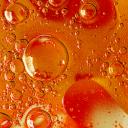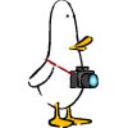Yahoo Answers is shutting down on May 4th, 2021 (Eastern Time) and the Yahoo Answers website is now in read-only mode. There will be no changes to other Yahoo properties or services, or your Yahoo account. You can find more information about the Yahoo Answers shutdown and how to download your data on this help page.
Trending News
7 Answers
- jeannieLv 78 years agoFavorite Answer
Yes! Every word! I especially find the "new photographers want to try everything" concept valid. I think that learning on film forces one to slow down the process. The nature of the process is slow - you have develop the film, wait for the film to dry, make contacts and prints, let them dry then critique the work and redo the prints for contrast, time. Colorizing took a steady hand and Marshall's oils. Even just the flag would take at least an hour for an experienced hand colorist. A rookie could make a real mess in just a few short minutes. Then it's back to the darkroom to make some more prints. With film, it is necessary to plan things out before shooting so as to have a clear path all the way to the final print. There is as much thinking involved as shooting and printing.
Vignetting and to a lesser extent, tilting, come and go in fashion. We just have to wait it out. Also, if you have to put words on an image, you've failed completely. The picture should say what you want it to say.
Digital allows one to work in the moment as it were. The ease which one can make a photo now lulls us into the idea that photography is spontaneous. Actually this is rarely true. Even in digital well executed photos (and printing techniques) are planned for in advance. On those occasions where you just have to shoot the knowledge base from that experience carries through so that only the subject of the photo is spontaneous - the rest is built on solid knowledge which takes years to acquire fully.
Photography is a marathon not a sprint.
Source(s): @Edwin: lmao! - Steve PLv 78 years ago
No one who has any accomplishment as a photographer would argue with any of that, but the problem goes much deeper. One of the replies on the site stated that he does the selective color thing because that is what the client wants. That is the heart of the problem.
Consider why "new photographers" do all these things so much? They do it because it is what they have seen over and over again. The public has attained a drastically low knowledge of what good photography even is today. They LIKE this stuff and many times pay money for it.
As "good photographers" we hate seeing this stuff, but we are coming from a totally different direction from the general public in today's world. We grew up when photography was all film based and it was a respected, professional skill.
All of that has changed with "the digital age". New generations are growing up with endless reams of garbage photos on social websites. When they see something like all the examples in the article, they perceive it as "amazing" and creative and skilled photography. Their standards are horribly low, they want stuff that looks "kool", ... all the cliche garbage exists because the public accepts and wants it.
Expecting the "new photographers" to not do this kind of stuff is like expecting a gourmet meal to magically arise from a pot of grease and some rice. The cliche junk is there, and will continue to be, because it is the new standard of photography with the advent of a digital camera and software in the hands of every clueless button pusher that can draw a breath.
steve
- EDWINLv 78 years ago
Oh absolutely not. Beginners should be encouraged to use all 6 of these techniques in every single picture they take. That should effectively prevent them from ever trying to start a photography business.
Actually the list could be 2 or 3 times longer.
- TimLv 68 years ago
Somewhat.
Although I have used all of those techniques in some form or another (except for partial desaturation, vomit.)
I think the problem is that any technique/gimmick/cliche, can end up being a crutch for new photographers that prevents them from developing personal style.
For example, Dutch angles can work:
- Anonymous5 years ago
The actual criteria should be that anyone who buys 32ml petrol is not poor. The Planning Commission suggests that spending Rs 5.5 on cereals per day is good enough to keep people healthy. Similarly, a daily spend of Rs 1.02 on pulses, Rs 2.33 on milk and Rs 1.55 on edible oil should be enough to provide adequate nutrition and keep people above the poverty line without the need of subsidized rations from the government. It further suggests that just Rs 1.95 on vegetables a day would be adequate. A bit more, and one might end up outside the social security net. People should be spending less than 44 paise on fruits, 70 paise on sugar, 78 paise on salt and spices and another Rs 1.51 on other foods per day to qualify for the BPL list and for subsidy under various government schemes. A person using more than Rs 3.75 per day on fuel to run the kitchen is doing well as per these figures. Forget about the fuel price hike and sky-rocketing rents, if anyone living in the city is spending over Rs 49.10 a month on rent and conveyance, he or she could miss out on the BPL tag.
- Anonymous8 years ago
Those are definitely some of the more annoying things that we see in pictures.
Don't also forget the "duck face", the "dead centre subject", the "self portrait in a mirror" shot (especially if shot with a flash) and the "self portrait at arm's length resulting in a distorted face", the "twelve pictures of exactly the same thing with only minor differences", the "cat shot"...the list is almost endless.
- ?Lv 44 years ago
1
Source(s): World-Class Photography Training http://photographymasterclass.enle.info/?7qK4





